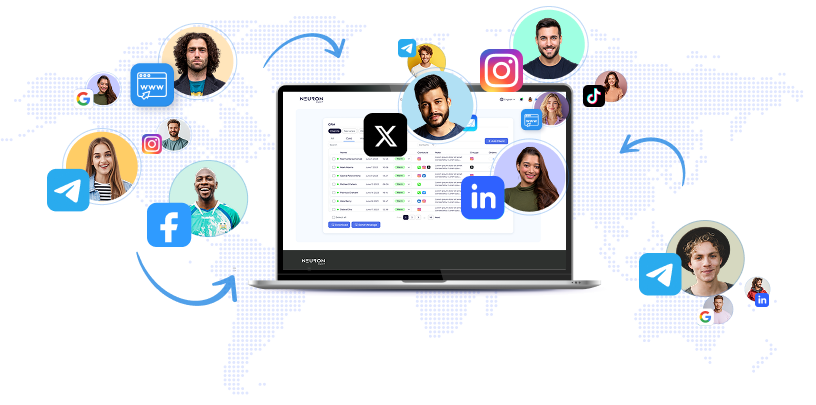
In the rapidly evolving digital marketing arena, email remains a dominant force, yet its success depends on strategic changes. Validity’s ‘State of Email 2025’ report reveals that companies allocating over 15% of their marketing budgets to email are twice as likely to achieve open rates above 40%. This finding, based on surveys of hundreds of global email marketers, highlights a crucial trend: higher investment correlates strongly with better performance. Published by Litmus on behalf of Validity, the report discusses how marketers are adjusting to a complex environment shaped by frequent mailbox provider updates, advancing technologies, and changing consumer behavior. Privacy regulations and AI-driven personalization stand out as top priorities. Notably, 22% of respondents struggle to measure or prove ROI, emphasizing the urgent need for improved analytics and measurement tools. ### Budget Allocation Drives Performance Companies heavily investing in email reap significant rewards. According to The Wise Marketer, those dedicating over 15% of their budgets to email observe considerably higher engagement, including open rates exceeding 40%. This trend suggests that underspending on email could disadvantage marketers competing in 2025. However, as PRNewswire notes, one in five marketers faces challenges in proving ROI, limiting their ability to secure increased budgets. This measurement gap is further complicated by compliance requirements from evolving privacy laws such as GDPR and emerging regulations in the U. S. , demanding advanced data handling. ### AI Personalization as a Game Changer Artificial intelligence is revolutionizing email marketing by transforming mass emails into personalized conversations. Martech View details how AI boosts personalization, accelerates content creation, and increases ROI through intelligent content and analytics in 2025. Marketers use AI to generate dynamic emails that adapt based on user behaviors, like recommending products from past interactions. Although most marketers recognize some ROI from these efforts, personalization remains challenging. The report highlights AI’s role in enabling predictive analytics and scalable customization, with experts like Jimmy Kim stressing how real-time AI adjustments—such as optimizing timing for refill reminders—now surpass basic personalization levels. ### Navigating Privacy Regulations Stricter global privacy laws are reshaping email strategies. Marketing Tech Insights underscores that compliance, including obtaining explicit user consent and ensuring data security in AI implementations, is essential to maintain trust and avoid penalties. WebProNews’ 2025 AI Marketing Trends article emphasizes ethical AI deployment that balances efficiency with stringent data privacy. Marketers are integrating AI-driven, multimodal personalization tools while adhering to regulations, combining innovation with compliance to sustain long-term engagement. ### ROI Measurement Challenges and Solutions Many marketers still find quantifying email’s ROI difficult.
Omnisend’s 2025 statistics note email’s impressive returns—up to $36 per dollar spent—but Validity’s survey shows 22% of marketers struggle with accurate metrics. Industry figures like Christian from coldemailchris on X recommend focusing on deliverability and tech stacks that incorporate automated sequencers and inbox providers to enhance measurable success. Litmus advocates leveraging analytics, A/B testing, and benchmarks to translate data into actionable insights that maximize ROI. ### Strategic Shifts in a Complex Landscape The report depicts ongoing adaptation amid constant disruptions, with providers like Google and Apple frequently updating systems. Webull’s summary points out that marketers are shifting focus from volume to engagement, aided by AI-crafted, relevant content. Hostinger’s 2025 email marketing stats reinforce trends toward mobile optimization and interactive elements that boost open rates. In B2B sectors, WebProNews highlights increased spending on thought leadership content combined with AI for personalized, nonlinear buyer journeys. ### Emerging Trends: Automation and Beyond Automation streamlines workflows, with AI at the forefront, as noted by ITMunch’s Email Marketing 2025 coverage. Predictive tools address personalization challenges effectively. ONPASSIVE’s posts forecast industry growth from $7. 5 billion in 2020 to $12 billion by 2024, driven by AI advancements. Experts like Alex Berman discuss hyper-personalization tactics in cold emailing, employing tools such as Clay for enriched, targeted campaigns that elevate performance. ### Industry Voices on Future Directions Practitioners offer insights into the path ahead. Jimmy Kim emphasizes email’s enduring ROI supremacy, encouraging brands to refine designs that capture inbox attention. The AsomPod episode shared by John Roman covers timely themes like AI personalization for seasonal campaigns. SeaMailer’s 2026 trends blog anticipates interactive emails and privacy-first strategies, mirroring the report’s innovation focus. Success in this dynamic environment hinges on wise budget allocation tightly linked to measurable outcomes. ### Investment Priorities for Sustained Growth Looking forward, strategic investment is key. Companies increasing email budgets experience compounded returns but require strong measurement frameworks. Validity’s insights, highlighted by PRNewswire, advocate prioritizing AI-driven personalization while managing regulatory challenges to foster trust. Overall, the State of Email 2025 report offers a comprehensive roadmap that combines data-driven tactics with emerging technologies to unlock email’s full potential in a privacy-conscious world.
State of Email 2025: How Budget Allocation, AI Personalization, and Privacy Shape Email Marketing Success


Amazon reported third-quarter net sales of $180.2 billion, marking a 13 percent increase compared to the previous year, driven largely by artificial intelligence initiatives throughout its Seattle-based operations.

Last summer at the Paris Olympics, Mack McConnell realized that search had fundamentally changed when his parents independently used ChatGPT to plan their day, with the AI recommending specific tour companies, restaurants, and attractions—businesses gaining unprecedented visibility.

The integration of Artificial Intelligence (AI) in social media marketing (SMM) is swiftly reshaping digital advertising and user engagement, driven by advances in computer vision, natural language processing (NLP), and predictive analytics.

Meta Platforms Inc.

In recent years, artificial intelligence (AI) has revolutionized marketing, enabling major companies to optimize strategies and achieve impressive returns on investment.

HIMSS' Rob Havasy and PMI's Karla Eidem emphasize that healthcare organizations need to establish well-defined goals and robust data governance before developing AI tools.

Wix, a leading website creation and management platform, has launched an innovative feature called the AI Visibility Overview, designed to help website owners better understand their sites’ presence within AI-generated search results.
Launch your AI-powered team to automate Marketing, Sales & Growth

and get clients on autopilot — from social media and search engines. No ads needed
Begin getting your first leads today